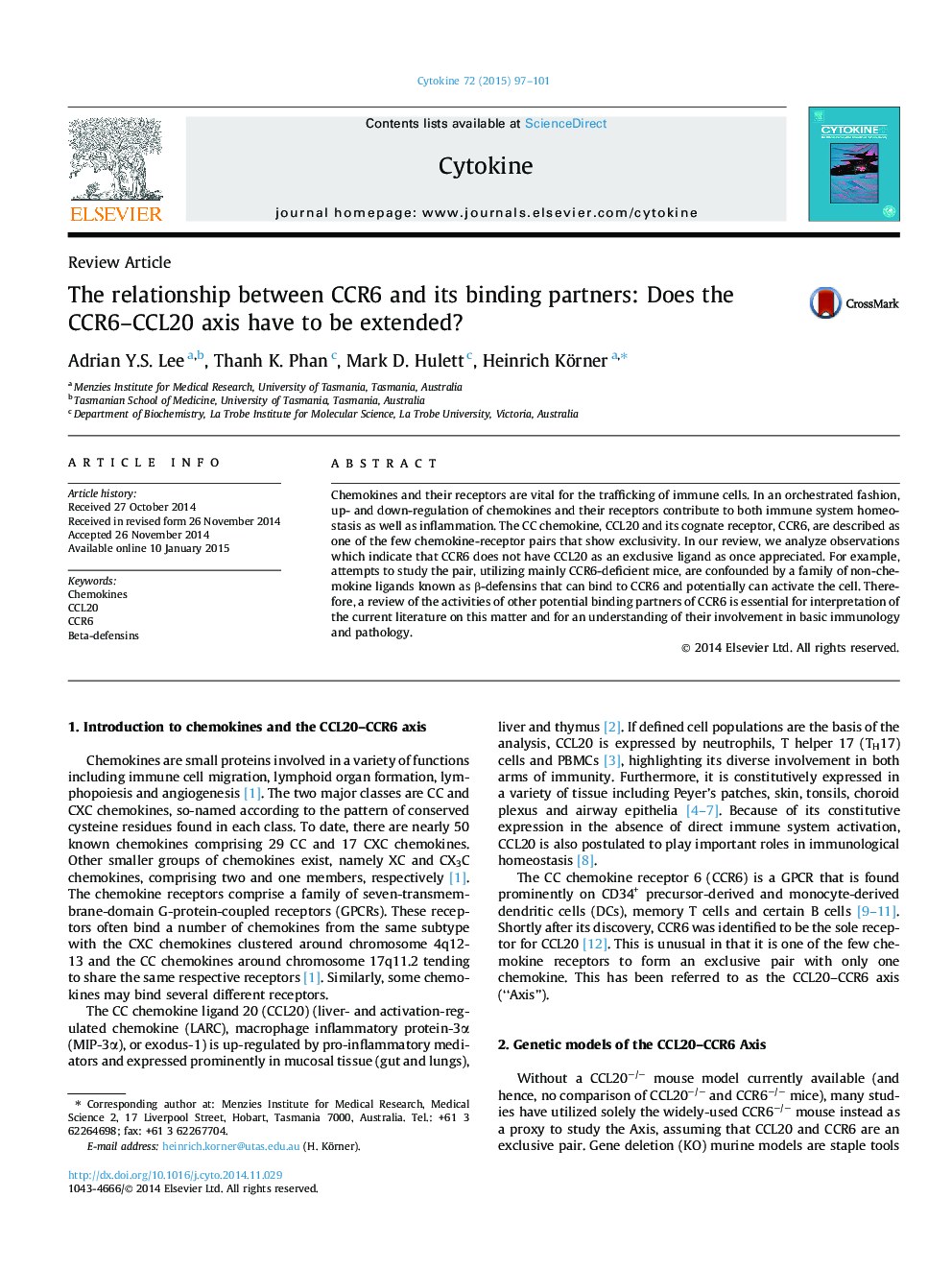| کد مقاله | کد نشریه | سال انتشار | مقاله انگلیسی | نسخه تمام متن |
|---|---|---|---|---|
| 2794110 | 1155252 | 2015 | 5 صفحه PDF | دانلود رایگان |

• CCL20 and CCR6 are molecules involved in T/B-cell and dendritic cell biology.
• The pair are said to be exclusive; but evidence points to otherwise.
• Human beta-defensins and possibly other ligands may bind to CCR6.
• The relative biological significance of extra-CCL20 binding needs to be elucidated.
Chemokines and their receptors are vital for the trafficking of immune cells. In an orchestrated fashion, up- and down-regulation of chemokines and their receptors contribute to both immune system homeostasis as well as inflammation. The CC chemokine, CCL20 and its cognate receptor, CCR6, are described as one of the few chemokine-receptor pairs that show exclusivity. In our review, we analyze observations which indicate that CCR6 does not have CCL20 as an exclusive ligand as once appreciated. For example, attempts to study the pair, utilizing mainly CCR6-deficient mice, are confounded by a family of non-chemokine ligands known as β-defensins that can bind to CCR6 and potentially can activate the cell. Therefore, a review of the activities of other potential binding partners of CCR6 is essential for interpretation of the current literature on this matter and for an understanding of their involvement in basic immunology and pathology.
Journal: Cytokine - Volume 72, Issue 1, March 2015, Pages 97–101